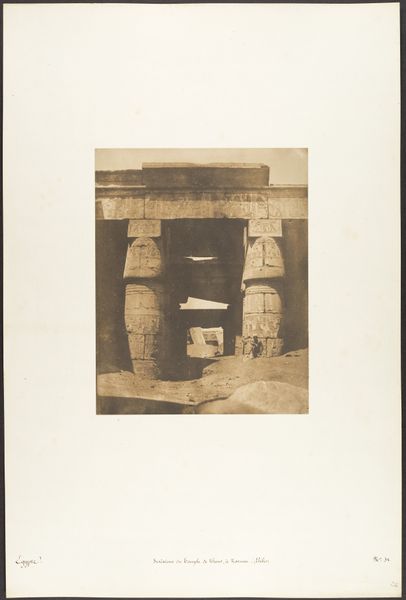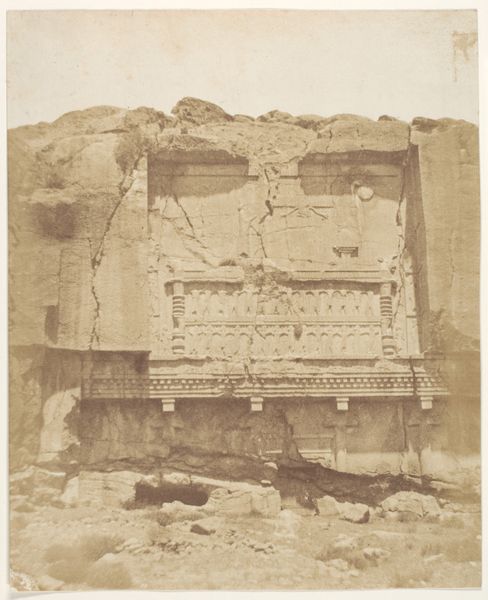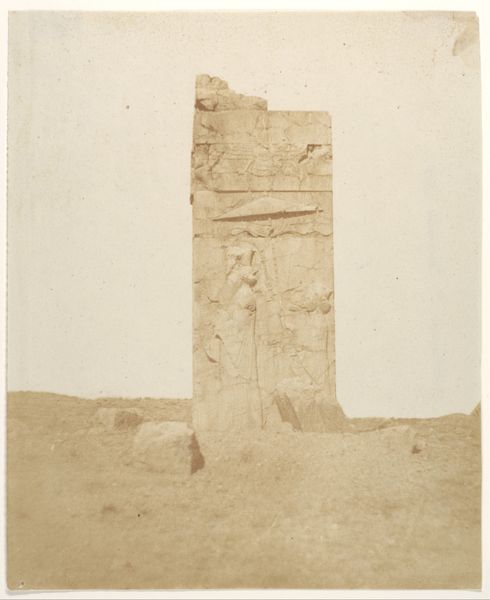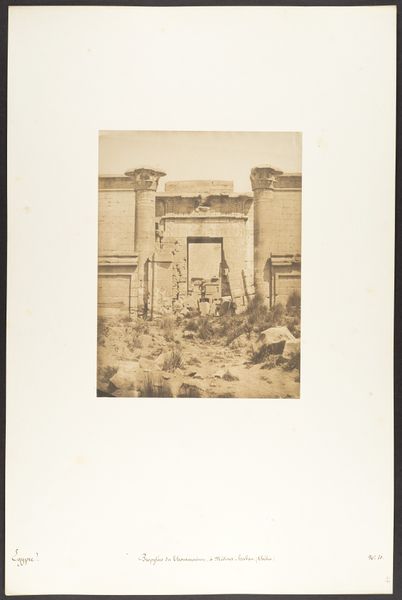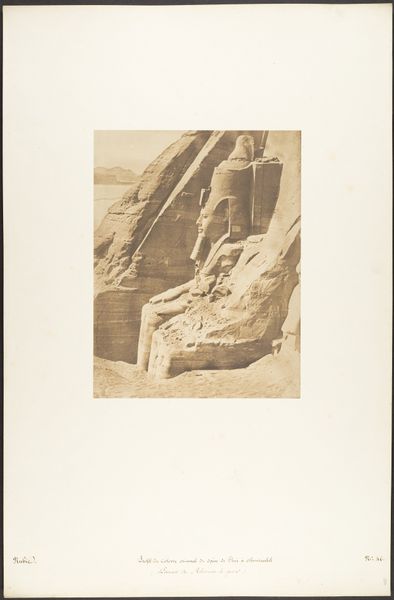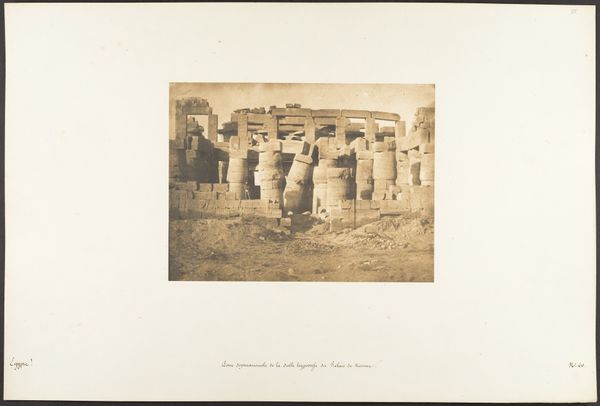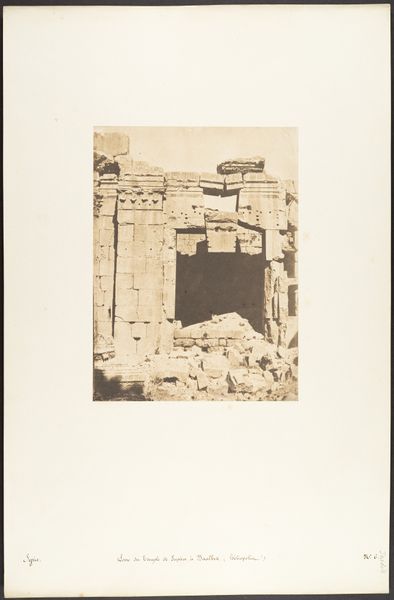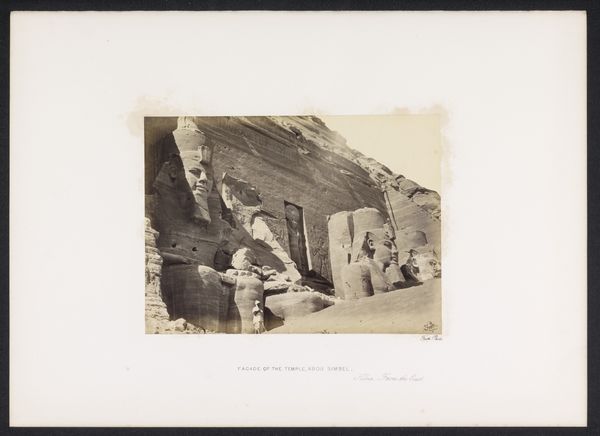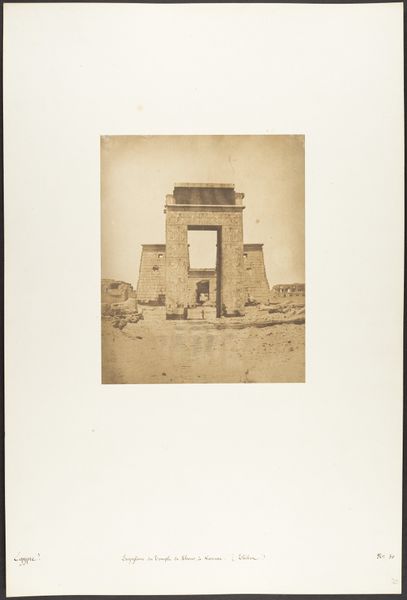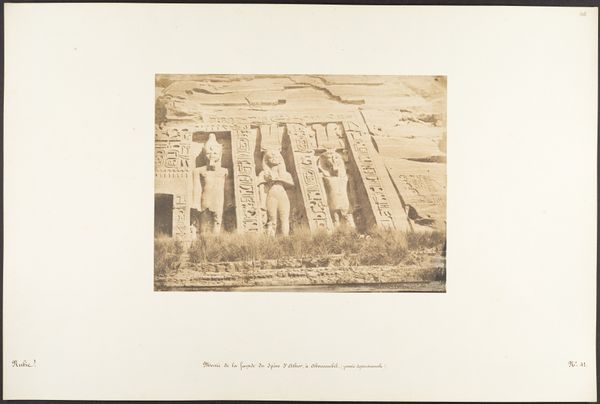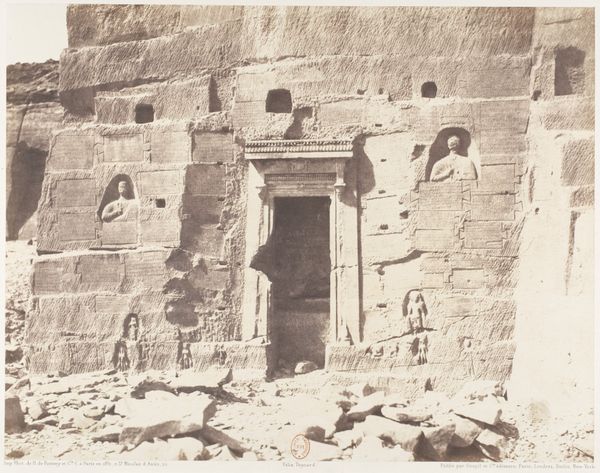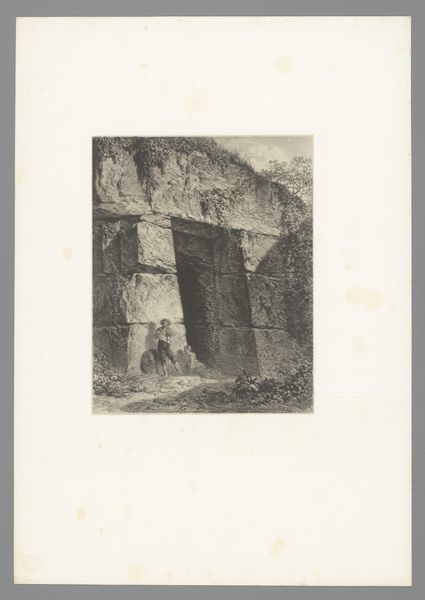
daguerreotype, photography, architecture
#
landscape
#
daguerreotype
#
ancient-egyptian-art
#
photography
#
ancient-mediterranean
#
architecture
Dimensions: Image: 8 5/8 × 6 3/8 in. (21.9 × 16.2 cm) Mount: 18 11/16 × 12 5/16 in. (47.5 × 31.2 cm)
Copyright: Public Domain
Maxime Du Camp made this photograph, 'Entrée du Spéos d'Athor, à Abousembil', using the calotype process, one of the earliest photographic techniques. Calotype uses paper coated with silver iodide, exposed in a camera, and then developed to create a negative image. What is remarkable is the way Du Camp's approach reveals the monumentality of the temple entrance. The soft, fibrous nature of the paper negative lends a texture to the image, emphasizing the rough-hewn quality of the stone facade. We see the huge statues flanking the entrance, each carved directly from the rock face. The process itself – the careful coating of the paper, the exposure, and the development – mirrors the slow, deliberate carving of the temple. Consider too, the labor required for both the original carving and for Du Camp’s expedition. Photography in the 19th century was not merely a matter of pointing and shooting; it involved laborious preparation and complex chemistry, often undertaken with the help of many hands. Du Camp's work bridges ancient craftsmanship and modern modes of production.
Comments
No comments
Be the first to comment and join the conversation on the ultimate creative platform.
